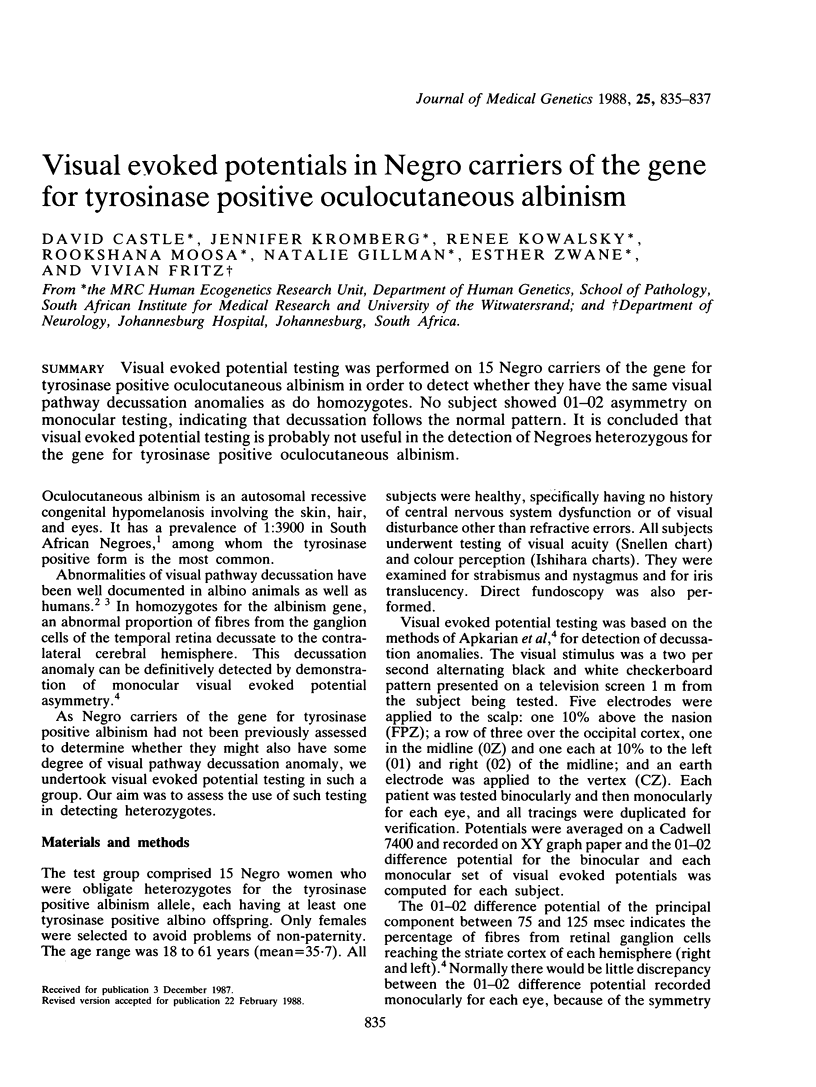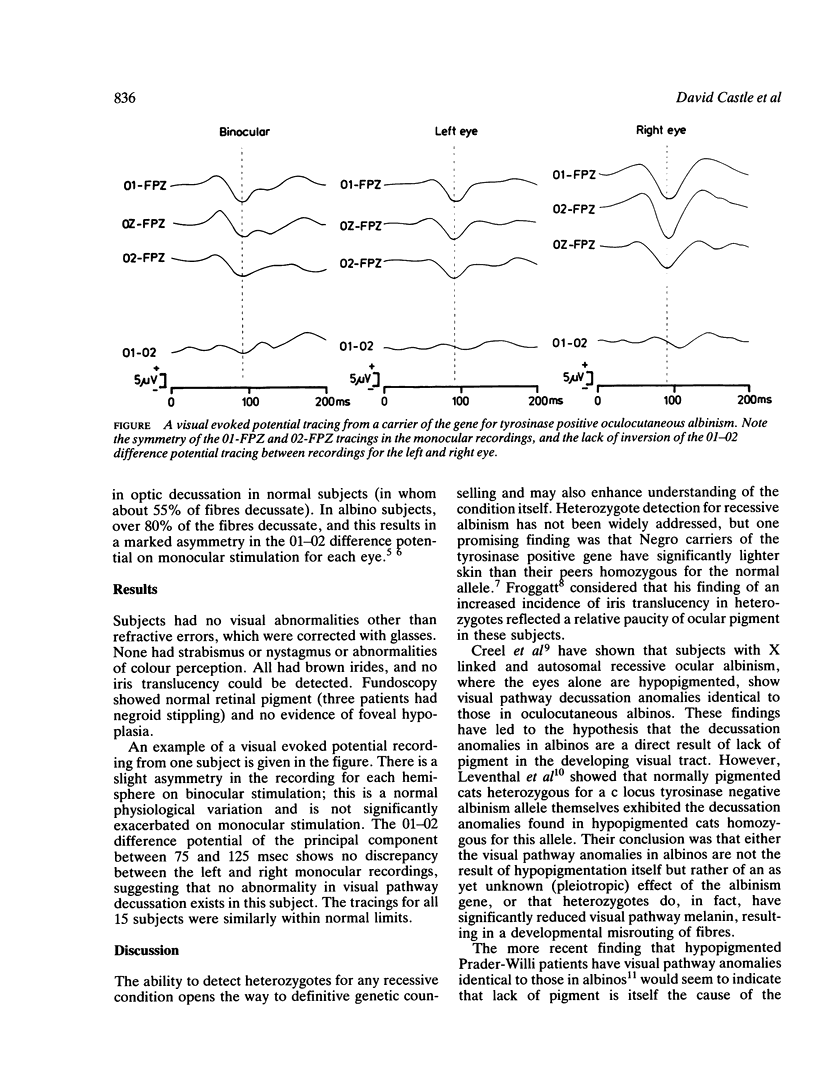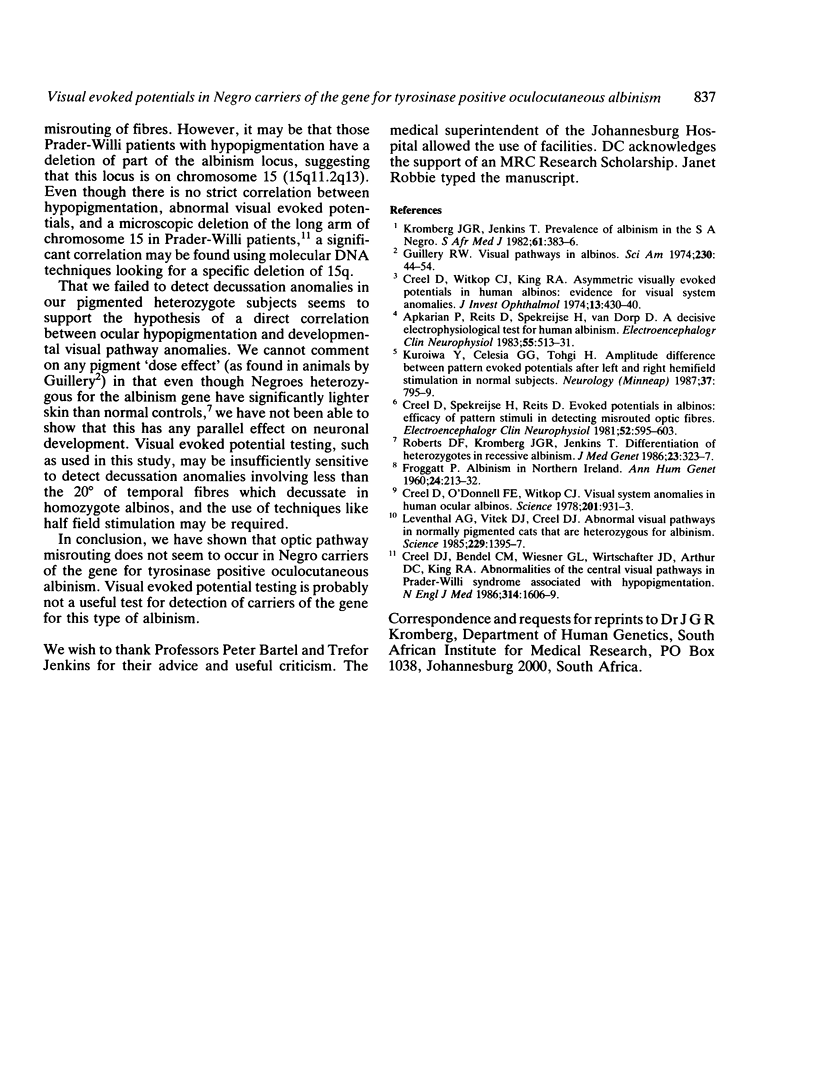Abstract
Visual evoked potential testing was performed on 15 Negro carriers of the gene for tyrosinase positive oculocutaneous albinism in order to detect whether they have the same visual pathway decussation anomalies as do homozygotes. No subject showed 01-02 asymmetry on monocular testing, indicating that decussation follows the normal pattern. It is concluded that visual evoked potential testing is probably not useful in the detection of Negroes heterozygous for the gene for tyrosinase positive oculocutaneous albinism.
Full text
PDF


Selected References
These references are in PubMed. This may not be the complete list of references from this article.
- Apkarian P., Reits D., Spekreijse H., Van Dorp D. A decisive electrophysiological test for human albinism. Electroencephalogr Clin Neurophysiol. 1983 May;55(5):513–531. doi: 10.1016/0013-4694(83)90162-1. [DOI] [PubMed] [Google Scholar]
- Creel D. J., Bendel C. M., Wiesner G. L., Wirtschafter J. D., Arthur D. C., King R. A. Abnormalities of the central visual pathways in Prader-Willi syndrome associated with hypopigmentation. N Engl J Med. 1986 Jun 19;314(25):1606–1609. doi: 10.1056/NEJM198606193142503. [DOI] [PubMed] [Google Scholar]
- Creel D., O'Donnell F. E., Jr, Witkop C. J., Jr Visual system anomalies in human ocular albinos. Science. 1978 Sep 8;201(4359):931–933. doi: 10.1126/science.684419. [DOI] [PubMed] [Google Scholar]
- Creel D., Spekreijse H., Reits D. Evoked potentials in albinos: efficacy of pattern stimuli in detecting misrouted optic fibers. Electroencephalogr Clin Neurophysiol. 1981 Dec;52(6):595–603. doi: 10.1016/0013-4694(81)91433-4. [DOI] [PubMed] [Google Scholar]
- Creel D., Witkop C. J., Jr, King R. A. Asymmetric visually evoked potentials in human albinos: evidence for visual system anomalies. Invest Ophthalmol. 1974 Jun;13(6):430–440. [PubMed] [Google Scholar]
- FROGGATT P. Albinism in Northern Ireland. Ann Hum Genet. 1960 Jul;24:213–238. doi: 10.1111/j.1469-1809.1960.tb01734.x. [DOI] [PubMed] [Google Scholar]
- Guillery R. W. Visual pathways in albinos. Sci Am. 1974 May;230(5):44–54. doi: 10.1038/scientificamerican0574-44. [DOI] [PubMed] [Google Scholar]
- Kromberg J. G., Jenkins T. Prevalence of albinism in the South African negro. S Afr Med J. 1982 Mar 13;61(11):383–386. [PubMed] [Google Scholar]
- Kuroiwa Y., Celesia G. G., Tohgi H. Amplitude difference between pattern-evoked potentials after left and right hemifield stimulation in normal subjects. Neurology. 1987 May;37(5):795–799. doi: 10.1212/wnl.37.5.795. [DOI] [PubMed] [Google Scholar]
- Leventhal A. G., Vitek D. J., Creel D. J. Abnormal visual pathways in normally pigmented cats that are heterozygous for albinism. Science. 1985 Sep 27;229(4720):1395–1397. doi: 10.1126/science.3929383. [DOI] [PubMed] [Google Scholar]
- Roberts D. F., Kromberg J. G., Jenkins T. Differentiation of heterozygotes in recessive albinism. J Med Genet. 1986 Aug;23(4):323–327. doi: 10.1136/jmg.23.4.323. [DOI] [PMC free article] [PubMed] [Google Scholar]


